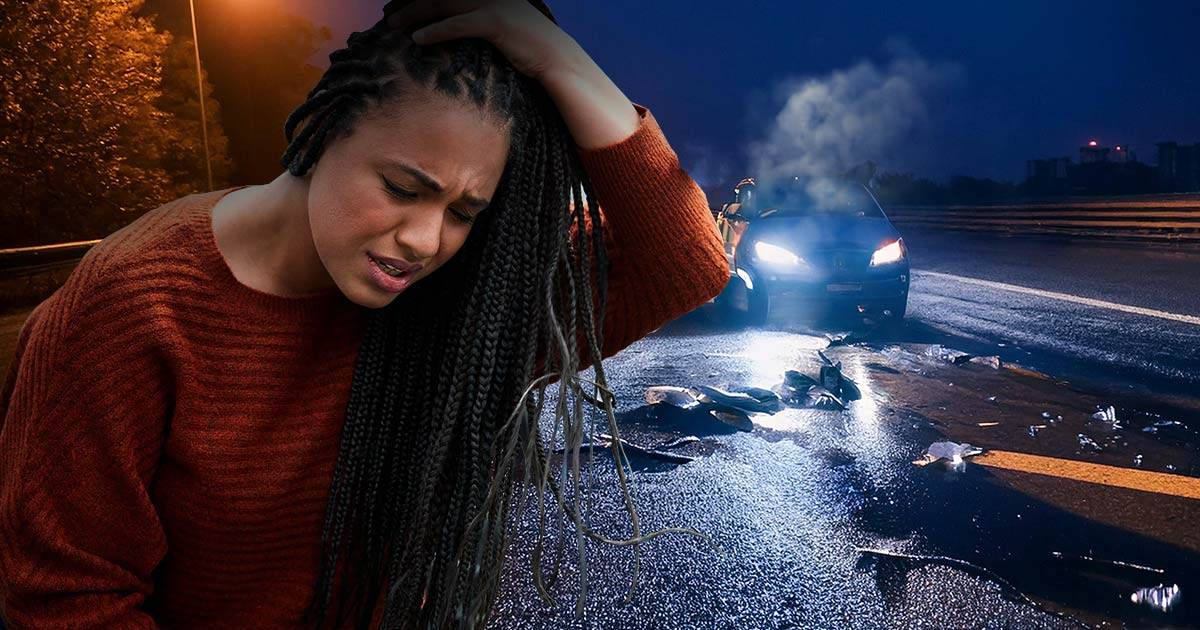Why Are Small Car Accidents More Common at Night?

Minor car accidents at night are more common than many realize. Despite fewer vehicles on the road, the risk of a small car accident at night is significantly higher. This increase in incidents can be attributed to various factors that make nighttime driving particularly challenging.
Do More Car Accidents Happen at Night?
Indeed, more car accidents occur at night than during the day. Nighttime crashes represent a significant portion of all traffic accidents, despite having less traffic on the road. This statistic indicates a heightened risk of minor car accidents at night, often linked to specific challenges faced by drivers after dark.
Moreover, a substantial number of fatal crashes happen in low-light conditions, including nighttime driving. This figure underscores how driving in the dark increases the likelihood of both minor and serious accidents.
Risk Factors of Night-Time Car Accidents
Nighttime driving comes with its own set of risks, making accidents more frequent and often more severe. Understanding these risk factors can help in minimizing the chance of a small car accident at night.
Driver Inexperience
Inexperienced drivers often find nighttime conditions particularly challenging. Their lack of familiarity with how to handle reduced visibility and other night driving challenges can make them more susceptible to accidents. New drivers might not yet be adept at adjusting their driving habits to accommodate the different driving dynamics encountered at night, such as managing glare from headlights or dealing with unexpected obstacles in the dark.
Impaired Driver
Driving after drinking alcohol or using drugs is a major risk for accidents at night. Alcohol affects judgment, coordination, and reaction time, making it tougher to handle road situations. The increased frequency of alcohol-related crashes at night contributes to a higher incidence of minor car accidents during these hours. Drug use, whether prescription or recreational, can also impair driving abilities, compounding the risk.
Driver Fatigue
Fatigue is another major risk factor for nighttime driving. When drivers are tired, they struggle to make quick decisions, stay focused, and react quickly to danger. Drowsy driving lowers attention and slows reaction time, increasing the chance of accidents. Many nighttime accidents are caused by drivers who are not fully alert, contributing significantly to the number of crashes that occur during late hours.
Reduced Visibility
Nighttime naturally reduces visibility because there is no sunlight. This makes it harder for drivers to see pedestrians, other cars, road signs, and possible dangers. Reduced visibility is a key factor in both minor and serious car crashes, as drivers may not notice obstacles or changes in road conditions until it is too late to avoid them. Properly functioning headlights and awareness of the limitations of night vision are essential for safer driving.
Reckless Driving
With fewer cars on the road, some drivers may feel more confident to drive recklessly. The absence of heavy traffic can lead to increased speeding, aggressive lane changes, and other risky maneuvers. This reckless driving can significantly increase the likelihood of minor accidents, as drivers might overestimate their ability to handle dangerous situations in the dark.
Safety Tips for Night Driving
Driving at night requires more caution to stay safe. Here are some helpful tips:
- Use High Beams Smartly: In areas with no oncoming traffic, high beams can improve visibility. However, switch to low beams when other vehicles are nearby to avoid blinding them and follow traffic rules.
- Drive at a Safe Speed: Adjust your speed based on how well you can see and the road conditions. Make sure you’re driving slow enough to stop safely within your visible range.
- Keep Your Car in Good Shape: Regular maintenance is important, especially for night driving. Make sure your headlights, taillights, and other lights work well to improve your visibility and help others see you.
- Avoid Distractions: Stay focused on driving and avoid using your phone, eating, or doing anything else that takes your attention away from the road.
- Rest Well Before Driving: Make sure you get enough rest before driving at night. Fatigue can severely impact your driving abilities, so getting adequate sleep is essential for safe driving.
What to Do After a Crash at Night
If you find yourself involved in a minor car crash at night, follow these steps to handle the situation properly:
- Ensure Safety: If possible, move to a safe spot and turn on your hazard lights to warn other drivers.
- Check for Injuries: Look for injuries on yourself, your passengers, and others involved. Call for emergency help if needed.
- Exchange Information: Share contact and insurance details with the other person involved in the accident.
- Document the Scene: Take pictures of the accident scene, vehicle damage, and other important details for your insurance claim.
- Report the Accident: Inform the police and file a report if required by local laws.
Stay Safe and Prepared When Driving at Night
Night driving has its own challenges, increasing the risk of minor accidents. By understanding these risks and following safety tips, drivers can lower their chances of accidents. Whether it’s due to reduced visibility, driver fatigue, or impaired driving, being prepared and cautious can help ensure a safer nighttime driving experience.
